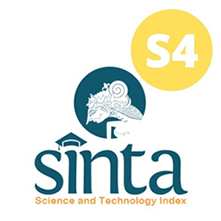IoT-Based Insulin Pump Design Analysis Using Flowrate Monitoring
Abstract
The management of diabetes, particularly for individuals requiring insulin therapy, presents significant challenges in ensuring accurate and timely insulin delivery. Traditional insulin pumps often lack the precision and adaptability needed for effective glucose control, leading to potential complications. This study addresses these issues by developing an IoT-based insulin pump that utilizes flowrate monitoring to enhance the accuracy of insulin administration. The research employed the ESP8266 microcontroller for data processing and control, coupled with the SLF3S-0600F liquid flow sensor to monitor insulin flow rates. The Blynk application was utilized for remote monitoring and dose adjustments, allowing users to manage their insulin delivery conveniently via an Android device. The experimental methodology involved conducting five repeated measurements to assess flow rate accuracy, volume delivery, and motor speed. Results indicated that the insulin pump achieved a flow rate measurement error of only 0.0051% at a setting of 1.5 ml/min, while the largest error recorded was 0.0391% at 3 ml/min. Additionally, the volume measurement error was minimal, with the smallest error at a 2 ml setting of 0.016% and the largest at 1 ml with an error of 0.152%. The average motor speed was recorded at 21.22 rpm for auto settings and 49.88 rpm for bolus settings. In conclusion, the developed IoT-based insulin pump demonstrates significant potential for improving diabetes management through precise insulin delivery and real-time monitoring capabilities. The integration of IoT technology not only enhances the accuracy of insulin administration but also provides users with greater flexibility and control over their treatment. This research contributes to the ongoing efforts to innovate diabetes care solutions, ultimately aiming to reduce the risk of long-term complications associated with the disease.

This work is licensed under a Creative Commons Attribution-ShareAlike 4.0 International License.
Authors who publish with this journal agree to the following terms:
- Authors retain copyright and grant the journal right of first publication with the work simultaneously licensed under a Creative Commons Attribution License that allows others to share the work with an acknowledgement of the work's authorship and initial publication in this journal.
- Authors are able to enter into separate, additional contractual arrangements for the non-exclusive distribution of the journal's published version of the work (e.g., post it to an institutional repository or publish it in a book), with an acknowledgement of its initial publication in this journal.
- Authors are permitted and encouraged to post their work online (e.g., in institutional repositories or on their website) prior to and during the submission process, as it can lead to productive exchanges, as well as earlier and greater citation of published work (See The Effect of Open Access).











